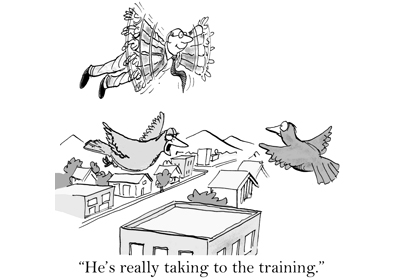
Many executive coaches offer telephone coaching to their clients, and it can be very effective. If time and place are an issue it is often very helpful to be able to have a telephone call with your coach.
But from a personal point of view, I far prefer working with my clients face-to-face whenever possible. Arguably Skype works for most meetings, but it’s not a great option for me for coaching, as I find it almost becomes more of a distraction than a help.
When you sit in the same room as someone you can quickly build rapport and you can interpret the body language. You can also allow a lengthy silence to develop without the client feeling the need to enquire “Are you still there?”
But there are some situations where face to face coaching is simply not possible. Over the last few months I’ve been working with the General Manager of Samujana in Thailand, a luxury resort on the island of Koh Samui.
Kurt Berman, the manager at Samujana, had a new and growing team and he was referred to me by an existing client whose company Rivertrade has a wide ranging portfolio of investments and businesses.
During this coaching programme I’ve had the added challenge of the time difference with Thailand, and on occasions an unreliable phone link. As the coaching dynamic is all about a high level of active listening and concentration on the part of the coach, this can often be very disruptive.
We have, however, recently come to the end of the phone coaching programme and it was clear that it worked perfectly well.
[testimonial author=”Kurt Berman, Samujana”]All of my fellow team members at Samujana would like to thank Amanda for working with me to become a better manager and leader. I am now better able to facilitate change, grow relationships and make strategic decisions that have aligned our values, focused our priorities, given confidence to our stakeholders and grown our business into a more efficient and more creative team who have more fun together![/testimonial]
As a coach I’ve been reflecting on how we made it work, and how I could replicate the success of the process. Firstly, I think phone coaching for me required a level of ‘conscious competence’. When I coach face-to-face I am ‘unconsciously competent’, in other words I coach intuitively and (almost!) effortlessly because I am so familiar with the process. So for phone coaching I have to concentrate that much harder, and listen to the words, the tone and even the silences. After a few sessions I was able to judge whether the coachee was struggling, deep in thought, or indeed just scribbling down some notes. The quality of the silence was just somehow different.
I also am aware that people are more or less visual, audio, or kinesthetic in their preferences. As a coach you are trained to look out for the signs in their language and then shift your own preference to match theirs. Put simply this could mean that as a visual person they would typically say “This is how I see it”, an audio person would say “What I’m hearing is…” and a person who is predominantly kinesthetic will talk about how they feel and their vocabulary will tend to be ‘tactile’.
I know that I am predominantly an ‘audio’ person. I’m a linguist, have some background in the dramatic arts and will certainly attempt any accent. I think this bias really helps me with phone coaching when I am almost totally reliant on what I’m hearing – not just the words themselves but the all important clues in the sub text.
In this particular case, I would say that my client also had an audio bias, which helped the coaching process. Having had a successful outcome I would certainly consider taking on a client for phone coaching again, although I would always recommend that coach and client have a preliminary meeting face-to-face to gauge whether the dynamic will work over the phone, because it is certainly more challenging.


About The Author: Amanda Baines
Amanda has a passion for turning ‘average’ into ‘excellent’. She delivers outstanding results through her dynamic coaching, consultancy and facilitation, producing organisations which maximise everyone’s potential and in which everyone plays to their strengths.
More posts by Amanda Baines